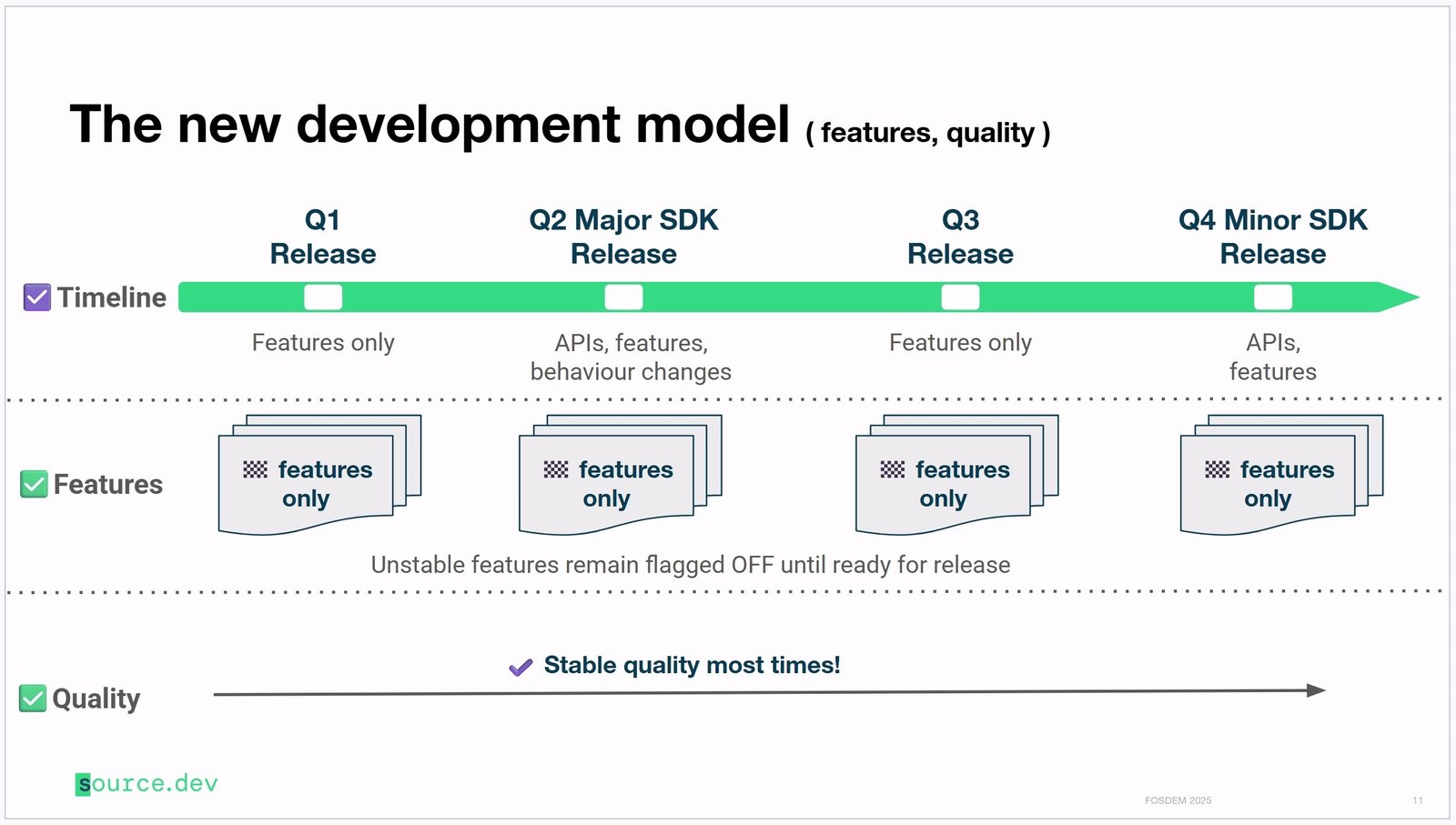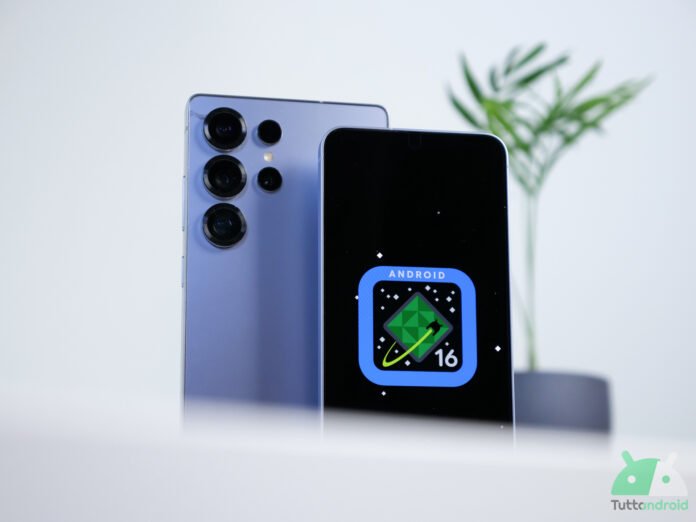Last weekend we have already had the opportunity to talk to you that Samsung will follow Google, aligning the development (and release) of the new versions of the One UI to the various developments (and releases) of the new versions of Android.
While at the beginning all this has emerged through the words of a leaker, in the last few hours the official reason for this change of course has been explained, put into practice with the aim of speeding up the release of updates by the South Korean manufacturer who has already had the opportunity to exploit this new approach, concretizing with the release of the One UI 8 (on Android 16) which took place just one month after the first release in stable form of the most recent version of the operating system of the green robot.
Follow Samsung Italia on Telegram, Receive news and offers first
From development for “branches” to “trunk” development
Let’s start from afar. In the past, Google developed Android using A model based on “Branch” (branches) which involved the use of a separate code branch for each new version of the operating system.
In this approach, new features were added to the new branch until the development of the branch itself were completed and, later, the new branch was going to merge into the main internal branch of Android.
This approach, which seems to be sensible, has actually created significant problems for Android because The union of two databases often coincided with a huge drop in quality and with the “appearance” of bugs and inconsistencies that required time and resources for their resolution.
Another problem of the development in branches concerns the new features. If a feature was not ready within the deadline for release, the Code branch “New” would have been added to the main branch incompletewith the work to complete the functionality that would continue in the branch of the next version.
The “Trunk Stable” project arrives
To solve these problems, Big G has completely revised the development methodology of Android, passing from development for branches to “trunk” development (Trunk). The turning point came in the final part of 2023, during the development cycle that brought us to Android 14 QPR2.
This quarterly version of Android 14 is officially the first to be part of the project called Trunk Stable. This new approach provides that new features, new bees And Bug corrections come developed behind the so -called “Flag feature“ (lett. FUN FUN FUNS).
They allow developers of include all these New elements in the code of a subsequent release of Android but Of deactivate them in public releases until they are complete and ready for the release (thanks to the identification of these Flag feature Many pitfalls manage to find the new features in advance). If you are interested in deepening the topic, we refer you to an unofficial guide to the Trunk Stable project.

Android 16 is the first “Trunk Stable” version of Android
The Mountain View giant has attributed to the project Trunk Stable The change of program in the release of Android which materialized this year, with the release of Android 16 which took place in June and not in the previous Autumn window.
Android 16 is the first entirely developed version with the project Trunk Stable And, as we have known for some time, it will be followed by a quarterly update that will bring only new features (Android 16 QPR1 expected in September 2025 with Material 3 Expressive, Android desktop mode), a quarterly update that is configured as an intermediate update (expected in December 2025, with new bees and new features) and a further quarterly update (expected in March 2025, with new features).
Samsung aligns Google, marrying “Trunk Stable” for the One UI
Companies like Samsung have developed their interpretation of Android in their own way, trying to do the best possible but without adapting 100% to what Google did. This is clear, even without staying in the home of the South Korean giant, with the numerous features that (especially in the past) are present in the various Roma personalized by the producers but absent in Android.
According to what was released by the well -known Insider Mishaal Rahman (via Android Authority), during a round table with journalists after Galaxy Unpacked At the beginning of the month, the one with which Samsung presented the new Galaxy Z Fold7 and Galaxy Z Flip7, the executive vice -president and head of the department R&D framework in the division Mobile Experience Business of Samsung suggested that The South Korean giant recognized the advantages offered by Trunk Stable, adapting the development model of One UI to the new model set up by Google.
Samsung’s manager herself hinted that the company has actively collaborated with Google in the development of the new model, or without Trunk Stable they could never have launched the One UI 8 So quickly compared to the launch of Android 16.
The next one UI releases suggested by a leaker now make sense
Another statement of the same manager concerns the cadence of release of the next versions of the One UI: They will follow Google’s releases of release to bring the latest versions of Android, on the supported devices, as soon as possible.
It remains to be understood if Samsung is able to actually follow the rhythm of the Mountain View giant but, if this were the case, the rumors about the next versions of the One UI would acquire greater sense to which we have mentioned at the opening.
There One UI 8.5expected with the next Galaxy S in January 2026, should be based on the update of December 2025 released by Google (which will be called Android 16 QPR2, Android 16.1/16.5 or in some way more imaginative). There One UI 9expected with the next folding in the summer of 2026, should be based on the update of June 2026 (if everything remains unchanged, it will be Android 17).
After it slip of the One UI 7, Samsung seems oriented towards a updating mechanism that allows him to optimize the timing and provide users to users with an increasingly updated operating system. Only time will tell us if this will lead to actual benefits.




